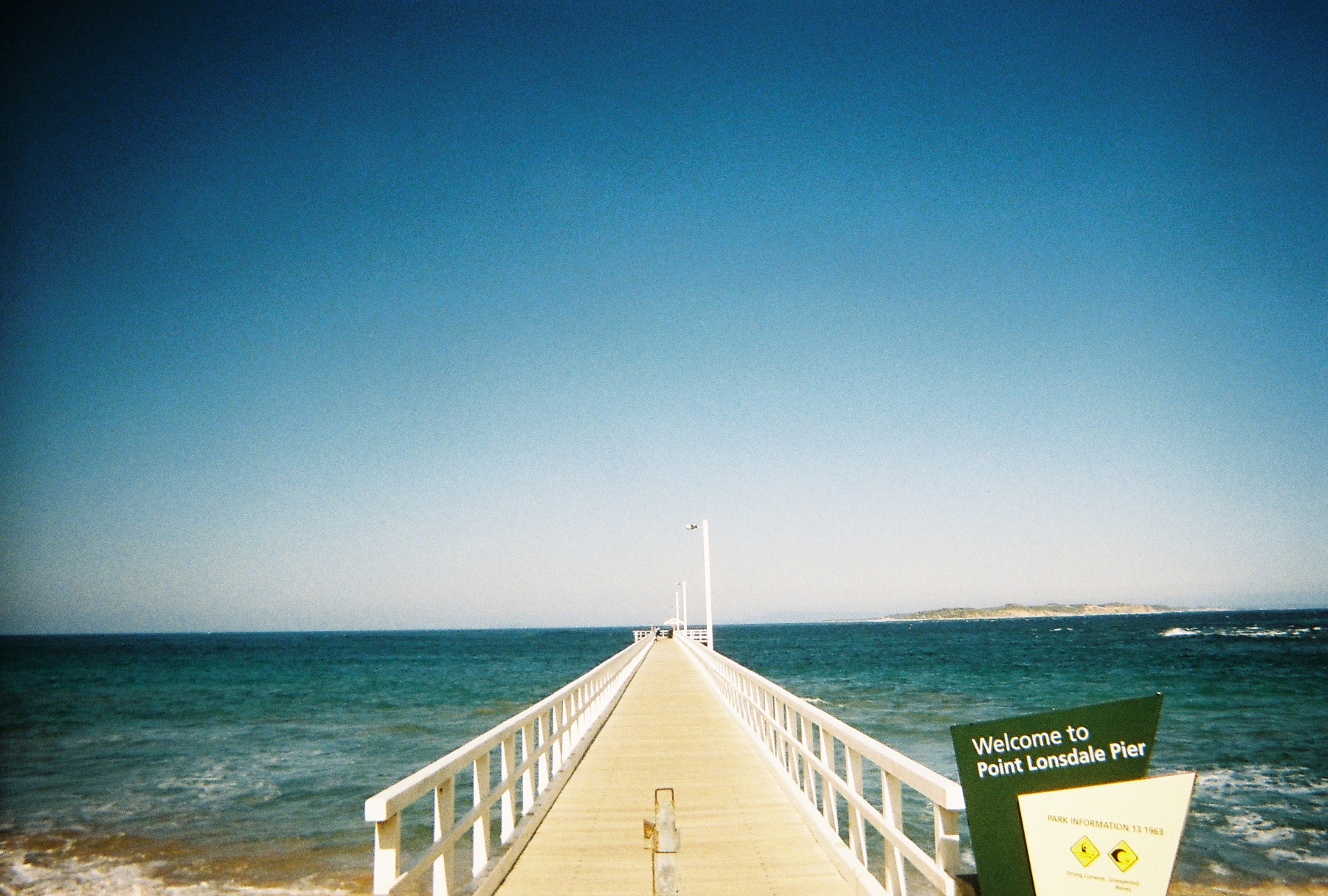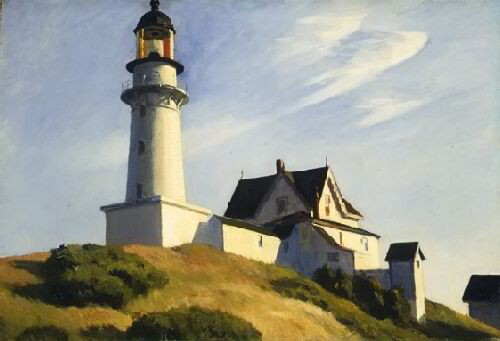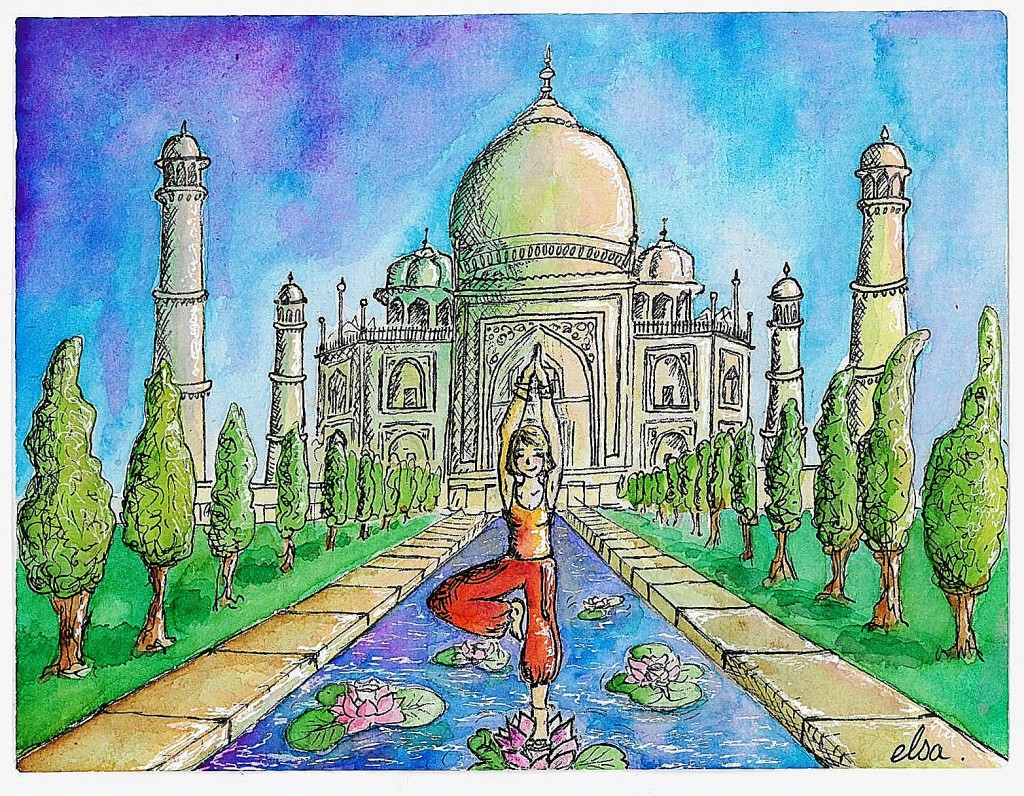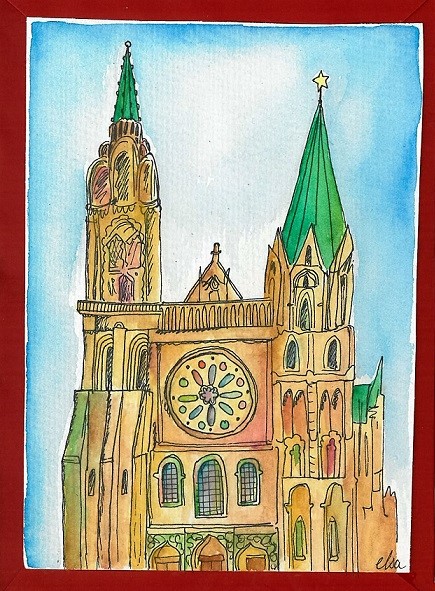
I have just finished the design of the first level of the zombie survival game.
You must ask what the hell that assignment is (and so do I)
But after putting my heart and soul (and holiday mf) now that it is finished, I feel like I could fly or jump in the field surrounded by butterflies and unicorns and stuff. #cuicui
No, seriously I have to explain what has happened because “c’est juste une immense blague” as I would say in French.
In short: I took this game design class because it is been a while that I am interested in serious games as something that could heighten awareness among people about significant causes (such as environmental, feminist etc. 🙂 and I thought that serious games could bring something relevant to the party.
So I looked at the unit guide of the class to see if it could indeed teach me some fundamental concepts of game design such as challenge/risk/reward/flow and so on..
What an opportunity! This class seemed gather all I was hoping for: theory, practicals, projects and fun and everything. Except for one thing, indeed, in order to be allowed to attend this class, one must have done a prerequisite. I looked at it and it seemed to be like an easy first year programming class. “Nah easy..” I thought, “I have done heaps of programming in the past” (at this point you might guess that life has punished me right after for my arrogance haha). Sooo, I asked for equivalence to the convenor who gives it to me without discussion (his bad) and that is how I started joyfully my game design class.
From the first week, I realize that the first-year-easy-class-requirement was in no way a programming class but it was “Introduction to video game”. Just my luck! In this class, students had to learn how to use Unity, which is a software that lots of game designers use to develop video games.
I should I have read the signs, but I haven’t. SOOO first obstacle: I had to catch up one semester of practicals in one week which was pretty stressful but at the same time quite fun because Unity is fairly well designed actually and the tasks were “cute” somehow. Like, I had to create small 2D game that reminds me doodle jump.
However, slowly but surely, I realized that the class that missed (Introduction to video game) had actually well prepared students to find and create the “fun” in a game which is what all it is about.
“Nevermind” I thought “I can be funny sometimes“
HUGE MISTAKE
Soo after being exposed for 5 weeks of mountains of further knowledges about game and game design, the time has come for us to do the first assignment:
“Your job is to design the introductory level for a zombie survival game set in the Australian outback.
The game starts with the player waking up in bed in the farmhouse where she lives. It is the middle of the night and zombies have invaded the house. The story requires the player to reach the shed outside the house where their truck is parked and drive off into the bush.
The game is a first person shooter. The main mechanics are moving and shooting.
The player moves at 4 m/s (metres per second) and can sprint at 8 m/s for 10s bursts with 30s cool-down time.
Zombies walk slowly at 2 m/s. If they see the player they will chase them.
The player starts at 100% health. They lose 10% per second while being attacked by a zombie. There are wall-mounted first-aid cabinets which heal 20% health when the player picks them up.
The player is initially unarmed. There are two weapons to introduce in the first level: a crowbar and a shotgun.“
That was it. That was the moment I knew I was in trouble, especially when I read “First Person Shooter”; because I had a vague idea of what it was and because I had already known that in no way it way my area of interest.
Nonetheless, I persisted (obstination bonjour) and I decided to take on this assignment as much as as I can. Naturally, the beginning was horrible. After hours on unity, I couldn’t come up of an idea of a farm, of challenges, of fun. More important, I couldn’t understand where the fun was in all the violence of this kind of game. I was completely blocked so I asked my teacher how I could do, knowing that my fraudulent background of non-gamer. Among several good tips, he advises me to try to play a FPS game (that was also the advice that Papa gave me). So, on that note, I bought “Left 4 death” because, according to my classmates, “that’s the best mate”.
Holy Moly ! That game was horrible! I didn’t survive more than 11 minutes. XD. Physically in and emotionally, men, too much tension for me. Anyway, trying to play was a bad bad bad idea: not only I wasted 20 bucks for a game that I would never play again but I was still stagnating for my assignment and I couldn’t see how I could design a FPS game without playing it.
My tutor (cool guy) and my teacher (cool guy) rescued me and told me to think about the level as a story, and to think about the experience of the player before anything else.
“remember that zombie movies are often about suspense. It doesn’t have to be constant fighting, room after room. Rather than adding more rooms, space things out. Make the player walk down a long dark empty corridor, uncertain of whether a zombie is going to appear from a door beside them. Or take them outside and make them walk through the trees in the moonlight. Think about your dramatic arc, it shouldn’t be all fighting all the time. “
These words unlocked the situation and I just did it. And when I say “I did it”, I did it well 😀
Nobody could stop me: I was experiencing “the flow” several time while doing it and feeling that while studying is just crazy! ( I am being weird, I know)
Overall I spent more than 50 hours (surely more but I stopped counting after that because it put me down haha) and all my holiday (just before the break I was like “yeaah, I might go to Tasmania or Urulu, you know.. we have so much time after all” HAHA). But despite that, and despite the fact that I still don’t like first person shooter game, I had fun doing it and I learnt heaps of things.
As I told my tutor: it is going to be the worse zombie level ever designed but at least I manage to explain why, I have done my best and I made pretty story boards. ♥
Happy ending!
(now I start to worry about the next assignment which is a group project where we have to create a multi-player game (like world of Warcraft but in 1000 times crappier of course) but one thing at the time, let me celebrate my victory of the day).
I hope you will enjoy some elements of my work (I didn’t put the screen shot of the “real” farm that I made in Unity, but I can tell that the final render was almost scary) (actually I scared myself while playtesting my own game) (And I almost cried when I reached the truck for the first time) (that is the thing: I designed a game too hard for me to achieve haha. My teacher says that that often happens in this industry but usually it is the other way around: like.. people design game too hard for the average person)
Let’s start with my kick ass map ! You can’t see on this scan but for the lights I put Glitter stickers. That was my personal touch. The corrector is going to be sooo blasé. xD
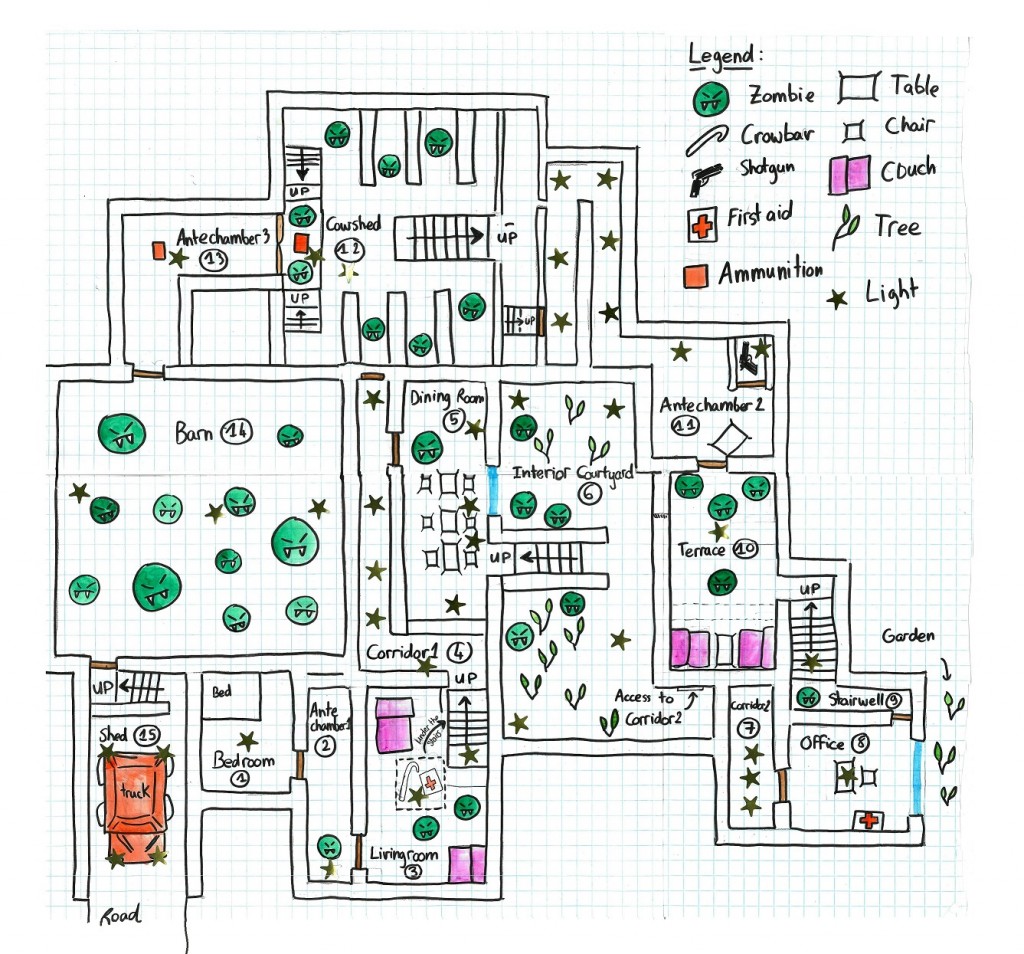
And here are the famous story boards: Fruits of My Labour.
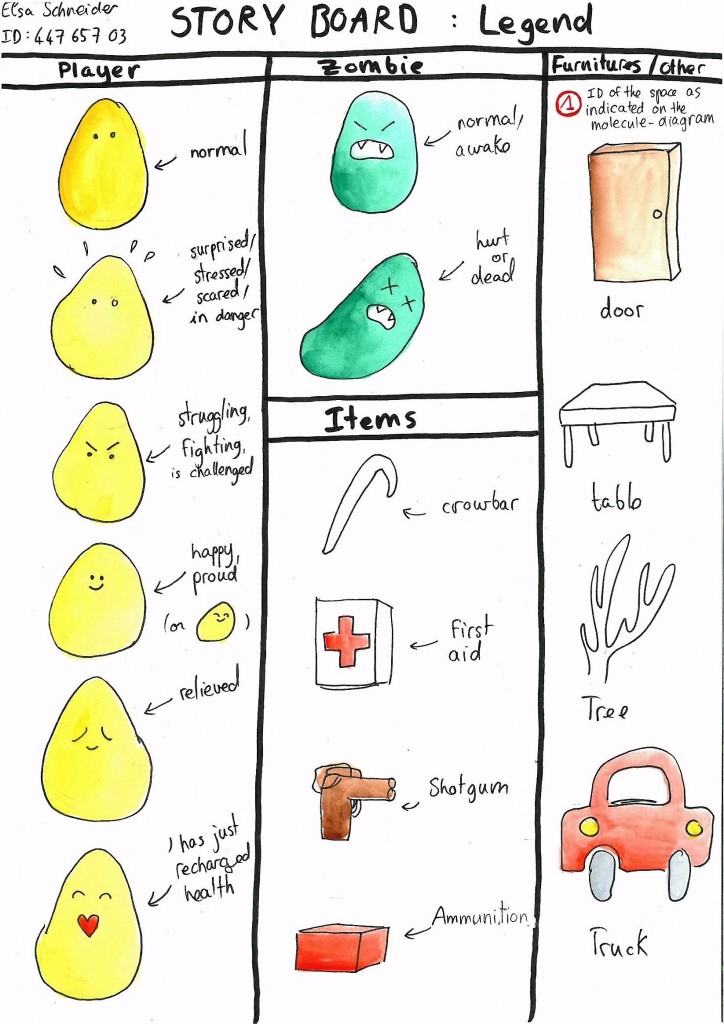
Antechamber 1

Livingroom
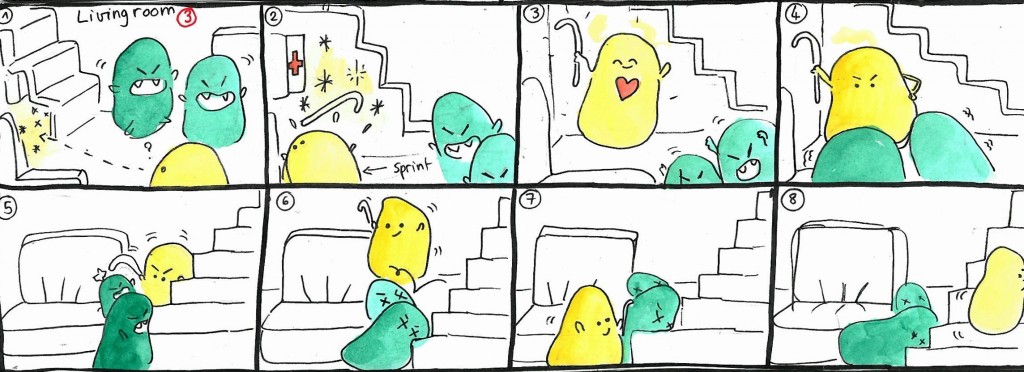
Corridor 1

Dining Room

Interior Courtyard
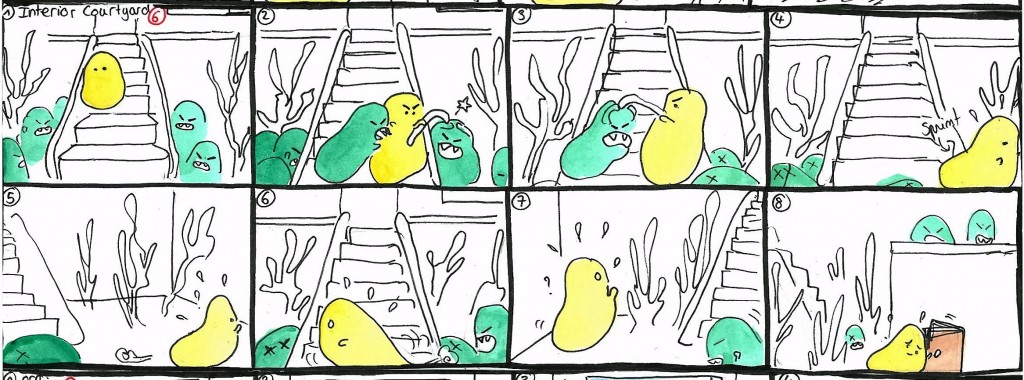
Office

Terrace

Antechamber 2
Part one
Part two
Part three
Cowshed
Antechamber 3 
Barn or the final battle
The Shed (the end) :’)
You can guess that the design of my player (especially when he or she is relieved) is inspired by “Leveinar” or Chansey in English or Lucky in Japenese. It has always my favourite pokemon. ♪♫ If you are nostalgic about the time where you used to deal card in the school yard or if you just want to know more about Leveinar follow this link.

Summary of action:
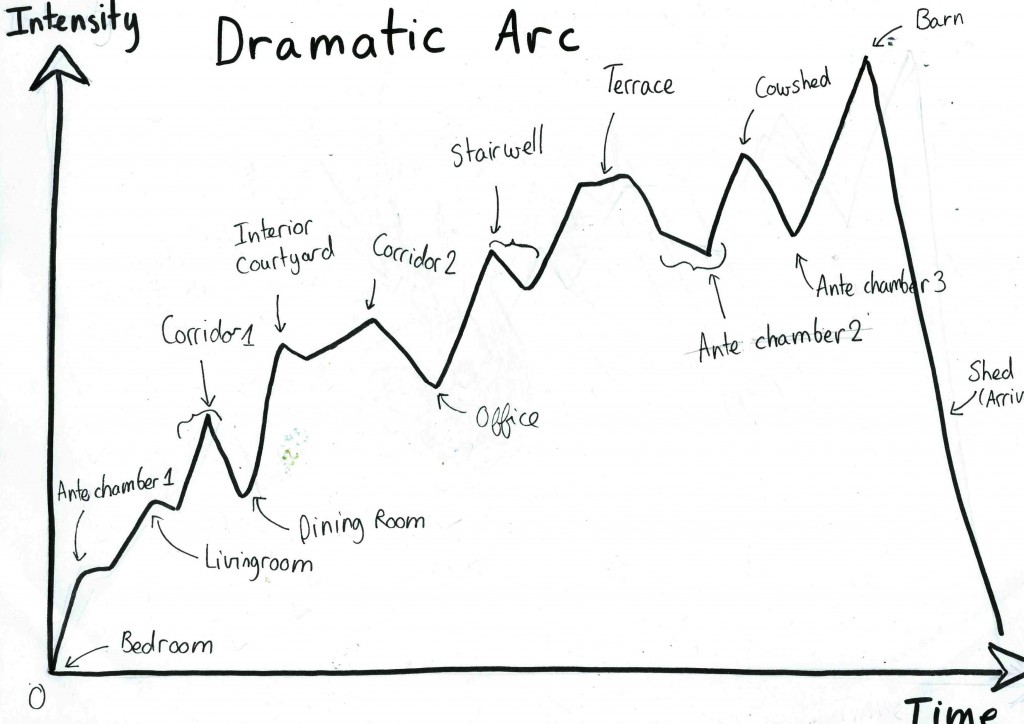
And I want to finish by thanking my beloved housemate who bought me a flying pig (and material to do hot chocolate) to cheer me up while I was dying at the beginning of the assignment. 😀 I am so blessed \0/

Hello youuu








